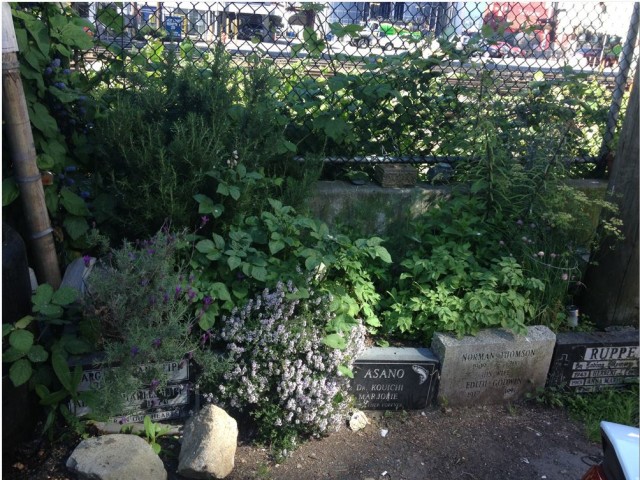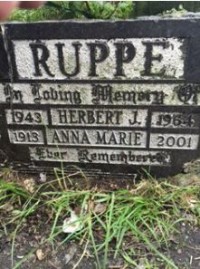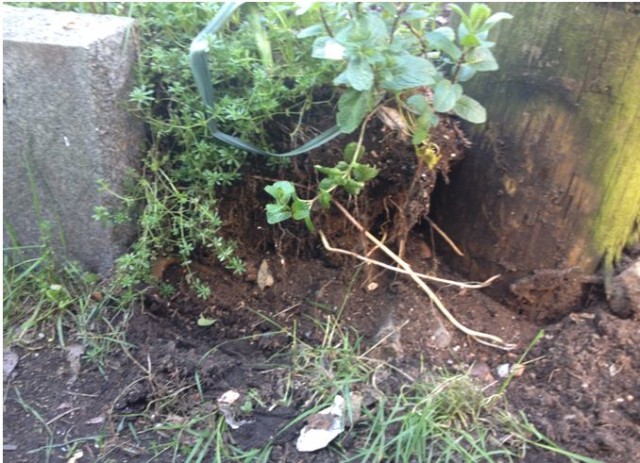
Rena Del Pieve Gobbi came under fire last week for using discarded gravestones to hold up her garden.
The garden is at Commercial and Powell, wedged in between the Maple Leaf Storage and the train tracks. Since 2001, Rena, an artist and documentary film-maker, has lived at the Artist Resource Centre which is just across from the garden. She survives on disability and while she has struggled with bi-polar and PTSD due to a childhood of sexual abuse, she has managed to complete both her Bachelor’s and her Master’s degrees at Emily Carr University of Art and Design.
But let’s get back to those gravestones.
Rena got them from a Vancouver stoneyard that closed down years ago. She found the stones lying in the grass nearby. Most of them were rejects, they were cracked and peeling and in bad shape. She found that quite disturbing.

When the media got hold of the story the focus was a) on the grungy part of town, and b) that it was disrespectful to have the names of the dead on markers in the grungy part of town. The descendants of the dead were predictably horrified, that was at least, until Rena had the chance to talk to them and tell them what she was doing.
“I deliberated over it for a day before I did it and I made a very conscious decision to face the names out,” she says. “I really felt it was disrespectful to people to face their names to the dirt.”
Rena offered the media photos of her garden taken in the summer when the lavender and the lilies were in full bloom, but they chose to use the photos taken in early spring, before she had a chance to get in there and tend to her plants.
Because what Rena is doing isn’t disrespectful at all, in fact it’s quite wonderful.
“I live in an industrial wasteland,” she says. “I’ve taken every single place that you can put dirt around my building and made a garden of it.”
Rena started to build her garden in 2007 around the eight disbanded gravestones. That was the year that the Robert  Pickton murder trial was underway, and for Rena, the garden became a kind of tribute to all the women of the DTES who were ignored and murdered.
Pickton murder trial was underway, and for Rena, the garden became a kind of tribute to all the women of the DTES who were ignored and murdered.
Shortly after the media attention came out the Ruppe marker disappeared. It was dedicated to Anna Ruppe (1913-2001) and
her son Herbert, 21, who died in a car accident in 1964.
Rena would like to think that the Ruppe family descendants came to repossess the stone, but more likely it was stolen because of the publicity. The stones, she says, are cemented into the ground quite firmly and wouldn’t be easy to move. The Ruppe stone was on the edge.
There’s a gaping hole in the retaining wall now and Rena worries that the missing stone may be put to a more sinister use than holding up her garden.

Rena is one of four women taking part in the Capture Photography Festival opening April 10. The show is called “Women realizing neglected spaces through photographs.”
© All rights reserved. Unless otherwise indicated, all blog content copyright Eve Lazarus.

